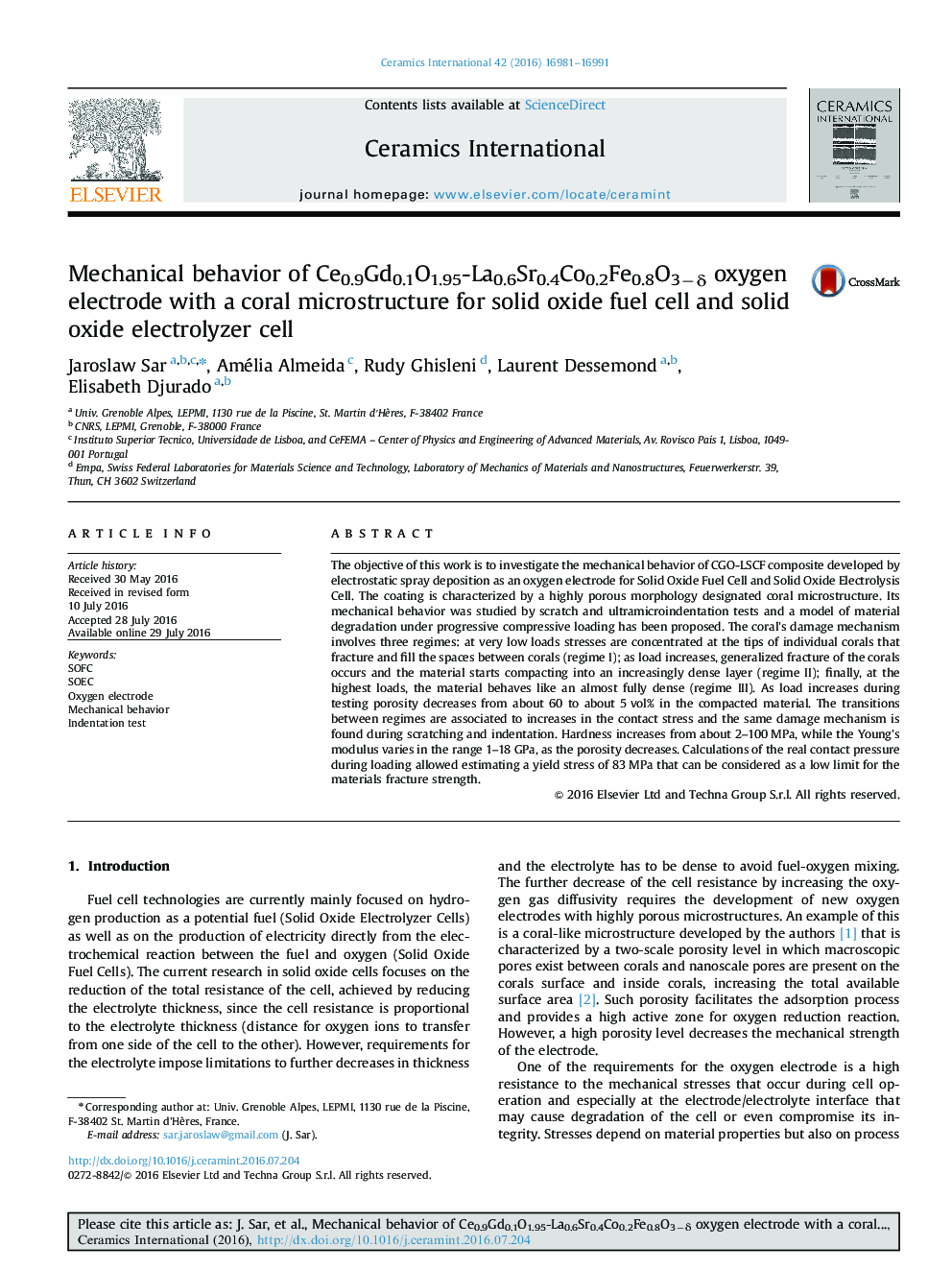| Article ID | Journal | Published Year | Pages | File Type |
|---|---|---|---|---|
| 5438754 | Ceramics International | 2016 | 11 Pages |
Abstract
The objective of this work is to investigate the mechanical behavior of CGO-LSCF composite developed by electrostatic spray deposition as an oxygen electrode for Solid Oxide Fuel Cell and Solid Oxide Electrolysis Cell. The coating is characterized by a highly porous morphology designated coral microstructure. Its mechanical behavior was studied by scratch and ultramicroindentation tests and a model of material degradation under progressive compressive loading has been proposed. The coral's damage mechanism involves three regimes: at very low loads stresses are concentrated at the tips of individual corals that fracture and fill the spaces between corals (regime I); as load increases, generalized fracture of the corals occurs and the material starts compacting into an increasingly dense layer (regime II); finally, at the highest loads, the material behaves like an almost fully dense (regime III). As load increases during testing porosity decreases from about 60 to about 5Â vol% in the compacted material. The transitions between regimes are associated to increases in the contact stress and the same damage mechanism is found during scratching and indentation. Hardness increases from about 2-100Â MPa, while the Young's modulus varies in the range 1-18Â GPa, as the porosity decreases. Calculations of the real contact pressure during loading allowed estimating a yield stress of 83Â MPa that can be considered as a low limit for the materials fracture strength.
Related Topics
Physical Sciences and Engineering
Materials Science
Ceramics and Composites
Authors
Jaroslaw Sar, Amélia Almeida, Rudy Ghisleni, Laurent Dessemond, Elisabeth Djurado,
